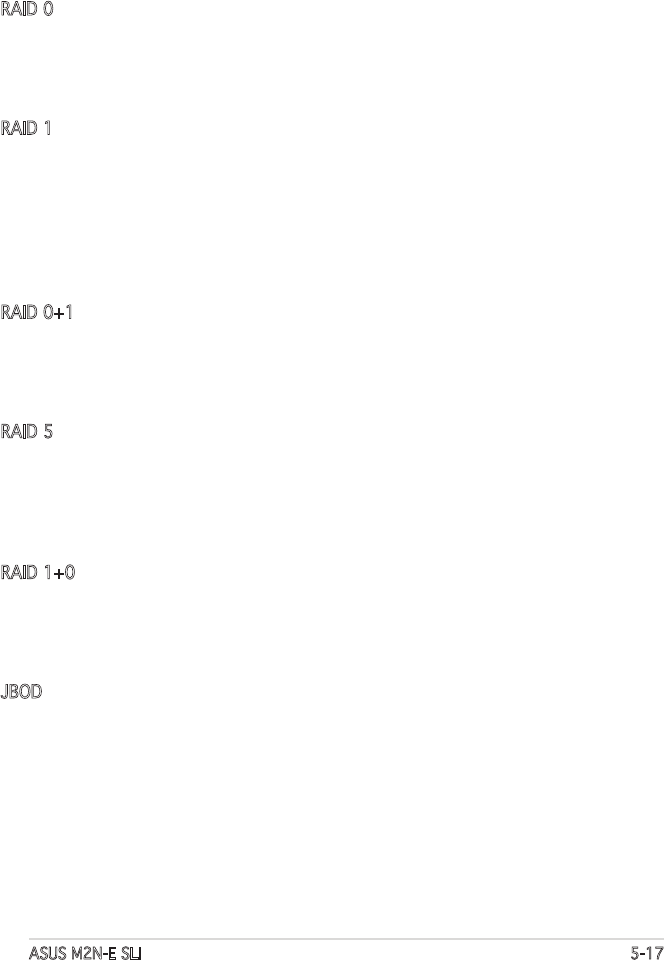
ASUS M2N-E SLI 5-17
5.4 RAID congurations
The motherboard comes with the NVIDIA
®
SLI Southbridge RAID controllers
that allow you to congure IDE and Serial ATA hard disk drives as RAID
sets. The motherboard supports the following RAID congurations.
RAID 0
(Data striping)
optimizes two identical hard disk drives to read and
write data in parallel, interleaved stacks. Two hard disks perform the same
work as a single drive but at a sustained data transfer rate, double that
of a single disk alone, thus improving data access and storage. Use of two
new identical hard disk drives is required for this setup.
RAID 1
(Data mirroring
) copies and maintains an identical image of
data from one drive to a second drive. If one drive fails, the disk array
management software directs all applications to the surviving drive as
it contains a complete copy of the data in the other drive. This RAID
conguration provides data protection and increases fault tolerance to the
entire system. Use two new drives or use an existing drive and a new drive
for this setup. The new drive must be of the same size or larger than the
existing drive.
RAID 0+1 is
data striping
and
data mirroring
combined without parity
(redundancy data) having to be calculated and written. With the RAID
0+1 conguration you get all the benets of both RAID 0 and RAID 1
congurations. Use four new hard disk drives or use an existing drive and
three new drives for this setup.
RAID 5 stripes both data and parity information across three or more hard
disk drives. Among the advantages of RAID 5 conguration include better
HDD performance, fault tolerance, and higher storage capacity. The RAID 5
conguration is best suited for transaction processing, relational database
applications, enterprise resource planning, and other business systems.
Use a minimum of three identical hard disk drives for this setup.
RAID 1+0 is a striped conguration with each stripe a RAID 1 array of
drives. It combines the features of both RAID 1 and RAID 0. Fault tolerance
is provided through
mirroring
while adding performance through
striping
.
This offers higher performance than a RAID 1 conguration but at a much
higher cost. A minimum of four hard disk drives is required for this setup.
JBOD
(Spanning)
stands for Just a Bunch of Disks and refers to hard disk
drives that are not yet congured as a RAID set. This conguration stores
the same data redundantly on multiple disks that appear as a single disk on
the operating system. Spanning does not deliver any advantage over using
separate disks independently and does not provide fault tolerance or other
RAID performance benets.


















